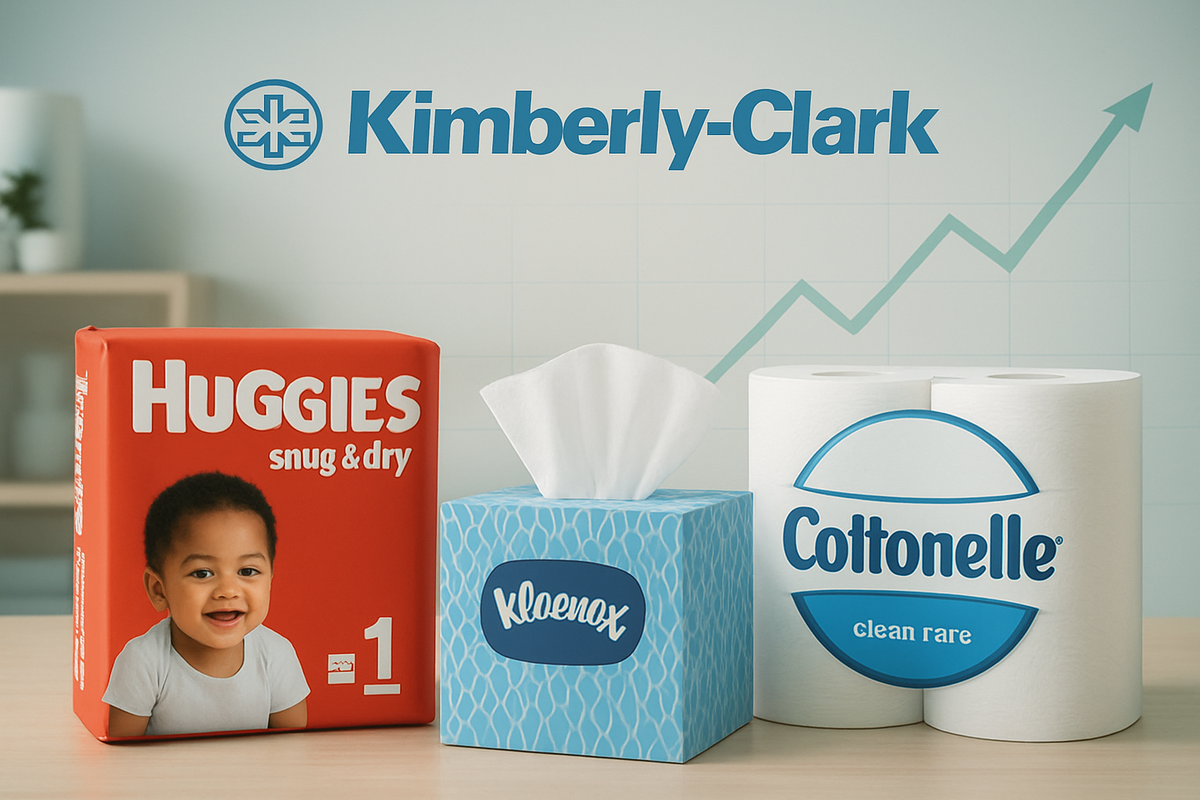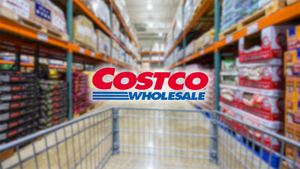
Irving, Texas – November 20, 2025 – Kimberly-Clark Corporation (NYSE: KMB), a global titan in the consumer goods arena, has once again underscored its unwavering commitment to shareholder returns by declaring a quarterly dividend of $1.26 per share. This latest declaration, consistent with previous payouts throughout the year, signals the company's robust financial health and its enduring appeal as a reliable income provider for investors navigating a dynamic market environment.
The consistent dividend payout is a powerful statement in the current economic climate, demonstrating management's confidence in its operational prowess and future cash flow generation. For income-focused investors, this predictability offers a crucial beacon of stability, reinforcing Kimberly-Clark's reputation as a cornerstone of dividend portfolios and a testament to the resilience of essential consumer product categories.
Detailed Coverage of the Event
The recent declaration of a $1.26 per share quarterly dividend by Kimberly-Clark (NYSE: KMB) on November 20, 2025, continues a storied tradition of rewarding its shareholders. This dividend is scheduled to be payable on January 5, 2026, to stockholders of record as of December 5, 2025, with an ex-dividend date also set for December 5, 2025. This clear timeline provides essential information for investors regarding their eligibility for the upcoming payout.
This declaration is not an isolated incident but rather a continuation of Kimberly-Clark's consistent dividend policy throughout 2025, with identical payouts made in preceding quarters. Such predictability is a hallmark of the company's financial strategy, providing a steady income stream that is particularly attractive in uncertain economic environments. The annualized dividend of $5.04 per share translates to a yield of approximately 4.8% to 4.9%, positioning it as a compelling option for those seeking yield in their portfolios.
Kimberly-Clark's dividend history is exceptional, cementing its status as a premier dividend stock. The company has proudly paid dividends for an impressive 91 consecutive years and, more remarkably, has increased its dividend for 53 consecutive years. This extraordinary track record places Kimberly-Clark in the exclusive club of "Dividend Kings," a designation reserved for companies that have increased their dividends for at least 50 consecutive years. This achievement highlights not only financial discipline but also a sustained ability to generate profits and cash flow through various economic cycles.
The key players involved are Kimberly-Clark's board of directors, who authorize these payouts, and its vast global investor base, which includes individual retail investors, institutional funds, and retirement portfolios heavily reliant on stable income. While specific initial market reactions to this particular declaration were not immediately prominent, the consistent nature of the dividend itself is generally met with approval, reinforcing investor confidence in the company's long-term viability and strategic direction within the competitive consumer goods landscape.
Market Impact and Competitive Landscape
Kimberly-Clark's (NYSE: KMB) consistent declaration of a robust quarterly dividend solidifies its appeal to a specific segment of investors and sets a benchmark within the competitive consumer goods sector. As a "Dividend King" with over 50 consecutive years of dividend increases, Kimberly-Clark's stock often exhibits stability and resilience, particularly during periods of economic uncertainty. Its current dividend yield, hovering around 4.8% to 4.9%, is particularly attractive to income-oriented investors and those seeking defensive assets, especially in a fluctuating interest rate environment where higher-yielding alternatives become more desirable. The company's strong cash flow and established business model, despite a payout ratio that can appear high to some (around 83-84%), underpin the sustainability of these payouts.
Comparing Kimberly-Clark to its formidable peers, Procter & Gamble (NYSE: PG) and Unilever (NYSE: UL), reveals distinct strategies in shareholder returns. Procter & Gamble, another esteemed "Dividend King," also boasts an impressive record of dividend increases for 53 consecutive years. However, P&G's dividend yield, typically around 2.8% to 2.9%, is lower than Kimberly-Clark's, albeit with a more conservative payout ratio of approximately 60%. This suggests greater financial flexibility for P&G, making it appealing to investors who prioritize a blend of steady growth and dividend reliability. P&G's consistent innovation and brand management further bolster its market perception.
Unilever (NYSE: UL), while not a "Dividend King" in the same vein as KMB or PG, maintains a consistent dividend payment record since 1984, with a yield of about 3.3% to 3.5%. Its payout ratios, around 60-74% depending on the metric, indicate well-covered dividends. While Unilever's dividend growth rates have varied, its global reach and diverse product portfolio position it as a reliable, though perhaps less growth-oriented, dividend payer. Investors often perceive Unilever as a stable income generator, particularly given its vast presence in emerging markets.
The dividend policies of these consumer goods giants collectively influence investor expectations for the entire sector. The emphasis on consistent and growing dividends reinforces the defensive nature of consumer staples, attracting investors seeking reliable returns during market volatility. This capital allocation strategy, where a significant portion of earnings is returned to shareholders, is common for mature companies with established brands and often fewer high-growth investment opportunities. Ultimately, a company's ability to consistently pay and grow dividends serves as a strong signal of financial health, robust profitability, and effective management, enhancing market confidence and valuation across the goods industry.
Broader Industry Context
Kimberly-Clark's (NYSE: KMB) consistent dividend strategy, highlighted by its recent $1.26 per share declaration, is deeply embedded within broader trends shaping the consumer goods industry. Foremost among these is an unwavering focus on shareholder returns. As a "Dividend King" with over five decades of consecutive dividend increases, Kimberly-Clark exemplifies the consumer staples sector's role as a haven for income-focused investors. This emphasis on predictable payouts reflects the mature nature of the industry, where stable cash flows from essential products like diapers and tissues enable companies to consistently reward shareholders, especially in volatile economic climates. This strategy sets a high bar for competitors and reinforces the sector's reputation for defensive stability.
Beyond shareholder returns, Kimberly-Clark's approach also intersects with the critical and evolving trend of sustainability. The company has articulated ambitious goals, such as reducing carbon emissions by 30% by 2030, aligning with a significant industry-wide shift towards Environmental, Social, and Governance (ESG) criteria. This push is driven by growing consumer demand for ethically produced and environmentally friendly products, stakeholder expectations, and increasing regulatory scrutiny. Companies in the consumer goods sector are increasingly focusing on sustainable packaging, ethical sourcing, and supply chain transparency. Kimberly-Clark's financial stability, partly underscored by its consistent dividends, provides the necessary capital and confidence to invest in these long-term sustainability initiatives, which are crucial for maintaining brand relevance and meeting future regulatory requirements.
The transformative growth of e-commerce is another major trend influencing the consumer goods landscape. While not directly tied to dividend declarations, Kimberly-Clark's robust financial health, supported by its stable dividend policy, enables strategic investments in digital transformation. Consumer Packaged Goods (CPG) companies are accelerating their digital capabilities to meet evolving consumer shopping habits, which increasingly favor online channels. For KMB, a strong balance sheet and consistent shareholder returns allow for significant allocation of resources towards enhancing e-commerce infrastructure, leveraging data analytics, and exploring direct-to-consumer models, all without immediately jeopardizing its commitment to dividends. This strategic investment is vital for maintaining market share and adapting to the future of retail.
The ripple effects of Kimberly-Clark's dividend strategy extend across the essential consumer products market. For competitors, KMB's status as a reliable dividend payer creates pressure to also deliver attractive shareholder returns to compete for investor capital. This often drives rivals to enhance operational efficiency, strengthen brand loyalty, and explore innovative growth avenues while balancing dividend commitments. For partners, including suppliers, retailers, and distributors, Kimberly-Clark's financial stability signals reliability and long-term viability, fostering stronger, more trustworthy relationships. Its financial strength also empowers it to influence supply chain partners towards shared goals, such as adopting more sustainable practices, thereby elevating industry standards. Regulatory and policy implications, particularly concerning sustainability mandates, trade policies, and consumer protection in e-commerce, also play a significant role, requiring companies like Kimberly-Clark to adapt their operations and financial strategies to ensure compliance and mitigate risks.
Historically, Kimberly-Clark is not alone in its commitment to consistent dividends. The consumer staples sector is replete with "Dividend Aristocrats" and "Dividend Kings" like Procter & Gamble (NYSE: PG), The Coca-Cola Company (NYSE: KO), and Colgate-Palmolive (NYSE: CL). These companies demonstrate that strong brands, global scale, and resilient business models in categories with inelastic demand can generate reliable cash flows, enabling sustained and growing dividend payouts through various economic cycles. This "yield shield" characteristic attracts investors seeking stability and income, proving that a long-term focus on shareholder returns through dividends is a tried and tested strategy in the consumer goods industry.
The Road Ahead
The trajectory for Kimberly-Clark (NYSE: KMB) and the broader consumer goods sector is marked by both enduring challenges and significant opportunities, necessitating strategic agility and innovation. In the short term, Kimberly-Clark navigates a landscape of cautious consumer spending, persistent inflation, and potential volume pressures in its Baby & Child Care segment due to declining birth rates in key markets. However, the company's robust profit margins and disciplined debt management provide a buffer, supporting its unwavering dividend consistency. The ongoing "2024 Transformation Initiative," slated for completion by the end of 2026, is a critical short-term focus, targeting substantial productivity savings to bolster financial performance.
Looking further out, Kimberly-Clark is strategically positioning itself for robust long-term growth. Its "Powering Care" strategy, which includes a new operating model and a focus on 12 "powerhouse brands," aims to drive organic net sales growth exceeding market averages, coupled with mid-to-high single-digit growth in adjusted operating profit and EPS. Significant investments in innovation, digital transformation, and supply chain modernization are central to this vision. The company's commitment to generating at least $2 billion in annual free cash flow is crucial for sustaining its dividend growth and funding these strategic initiatives, reinforcing its appeal as a stable, long-term investment.
For the broader consumer goods sector, the long-term outlook is one of considerable expansion, with projections indicating a global market increase to $2.1 trillion by 2032. E-commerce is expected to be a primary growth engine, outpacing in-store shopping significantly and commanding a larger share of the Consumer Packaged Goods (CPG) industry. This necessitates continuous investment in digital capabilities, omnichannel strategies, and direct-to-consumer models across the industry. Key growth categories include health and wellness, sustainable products, premium goods, and personalized nutrition, offering fertile ground for innovation and market penetration.
Potential strategic pivots for Kimberly-Clark include a continued emphasis on its core "powerhouse brands," driving innovation across various price points, and aggressive margin optimization through its supply chain modernization efforts. A significant adaptation is its commitment to sustainability, aiming for 100% Natural Forest Free across its product portfolio, which aligns with evolving consumer values and regulatory pressures. Furthermore, increased investment in digital and AI-driven marketing will be critical to enhance agility and deepen consumer engagement. While inorganic growth through mergers and acquisitions, such as a potential Kenvue (NYSE: KVUE) deal, could offer substantial market opportunities in higher-growth categories like skincare, such moves would also entail integration risks and the need to demonstrate sustained synergies.
Emerging markets present both significant opportunities and challenges. These regions are the primary drivers of volume growth in the consumer products industry, characterized by expanding consumer bases and rising disposable incomes. Kimberly-Clark's focus on strong growth in five core emerging markets within its International Personal Care (IPC) segment is a testament to this potential. However, navigating demographic shifts (e.g., declining birth rates in China), economic and political instability, infrastructure limitations, and diverse cultural nuances will remain formidable challenges. Competitors like Procter & Gamble (NYSE: PG) and Unilever (NYSE: UL) are also aggressively pursuing these markets, intensifying the competitive landscape.
In terms of potential scenarios, a successful execution of Kimberly-Clark's "Powering Care" strategy would solidify its market leadership, enhance profitability, and ensure continued dividend consistency, likely leading to increased investor confidence. Conversely, struggles with volume growth, persistent inflation, and intense competition could pressure sales and margins, potentially necessitating further cost-cutting. For the industry, a fundamental shift towards a circular economy, emphasizing sustainable packaging and waste reduction, is a strong future scenario. A digital-first approach with personalized consumer engagement will become paramount, while continued economic volatility will demand a delicate balance between profitability and consumer affordability, potentially leading to increased demand for private labels and value offerings. The sustained growth in health and wellness categories also points to a future where companies innovating in premium and specialized segments will thrive.
Conclusion and Investor Outlook
Kimberly-Clark's (NYSE: KMB) declaration of a $1.26 quarterly dividend is a testament to its enduring financial strength and unwavering commitment to shareholder returns, reinforcing its position as a "Dividend King" with 91 consecutive years of dividend payments and 53 years of increases. This consistency, despite a relatively high payout ratio, is supported by robust cash flow generation and prudent capital allocation, signaling management's confidence in the company's resilient business model and its ability to navigate a complex consumer landscape.
Moving forward, the consumer goods market is characterized by moderating growth, persistent inflationary pressures, and evolving consumer behaviors. While global retail sales growth is projected to slow, emerging markets and digital channels, particularly e-commerce and direct-to-consumer (DTC) models, remain key engines of expansion. Consumers are increasingly value-conscious, driving companies to innovate and invest heavily in marketing and product development to maintain engagement.
The lasting impact of Kimberly-Clark's "Powering Care" strategy hinges on its successful execution, particularly its significant investments in North America, reorganization into new business segments, and focus on "powerhouse brands." This strategy, deeply integrating sustainability and digital transformation, aims to drive growth beyond industry averages and fortify its market leadership. While ambitious, its success will solidify the company's ability to deliver consistent, long-term value.
For investors, vigilance is key in the coming months. For Kimberly-Clark, closely monitor the execution of its "Powering Care" strategy, particularly its progress on productivity savings and growth targets. Assess the sustainability of its dividend, paying attention to cash flow generation and how the company manages its high payout ratio. Observe category growth performance and the success of its innovation pipeline and e-commerce expansion. For the broader consumer goods sector, watch for shifts in consumer spending trends, the balance between volume and price growth, and the ongoing impact of inflationary pressures. The performance of emerging markets and the industry's adaptation to digital transformation and sustainability mandates will also be critical indicators of future health.
This content is intended for informational purposes only and is not financial advice






